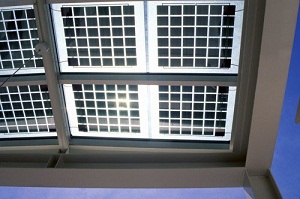GBI Research predicts solar will reach equity by 2020
 A new report from GBI Research anticipates that the costs of photovoltaics will reach international parity or cost equality with other energy sources by 2020. The report cites that drops in module costs as a driving factor in the lowered costs.
A new report from GBI Research anticipates that the costs of photovoltaics will reach international parity or cost equality with other energy sources by 2020. The report cites that drops in module costs as a driving factor in the lowered costs.
The report: “Solar Photovoltaic Power Market to 2020 – Market Leaders to Achieve Grid Parity due to Decreasing Module Prices, Low Maintenance and Ease of Installation” referred to an Applied Materials survey that projected in June 2012 that 98 percent of the world will achieve grid parity with solar by 2020, others think it might happen earlier. “Despite the speculations surrounding solar parity, the decreasing prices of modules and sustainable nature of solar energy make photovoltaic cells attractive long-term prospects for mass power production in many parts of the world,” GBI said.
“The achievement of grid parity will definitely promote the annual solar PV installations,” said GBI Research Analyst Mohinder Sawhney, who covers power, alternative energy and clean technology for the company. The report anticipated that the international installed solar capacity will reach 277.1 gigawatts by 2020. That’s more than 10 times the 27.1 gigawatts installed in 2011 and will be driven as countries around world reach parity.
“Countries in various regions will attain grid parity at different times. Italy in the European region is expected to achieve solar grid parity in its commercial segment as early as 2013, while France, Spain and the U.K. are expected to achieve it in 2016, 2017 and 2019 respectively,” Sawhney said. He anticipated that some plants in the U.S. will achieve parity by 2014. “By 2017, most of the regions in the country are expected to reach grid parity, as compared to average electricity prices in the residential sector,” he added. Most regions in China are expected to come into grid parity between 2015 and 2016.
In some countries parity will reach the commercial sector before it reaches the residential, according to Sawhney. “Italy is going to achieve grid parity at commercial level first while U.S. is going to achieve it for residential sector first,” he said.
That being said, some places have achieved achieve solar grid parity. For instance, “Australia has become one of the first countries in the world to achieve solar grid parity,” Sawhney said.



